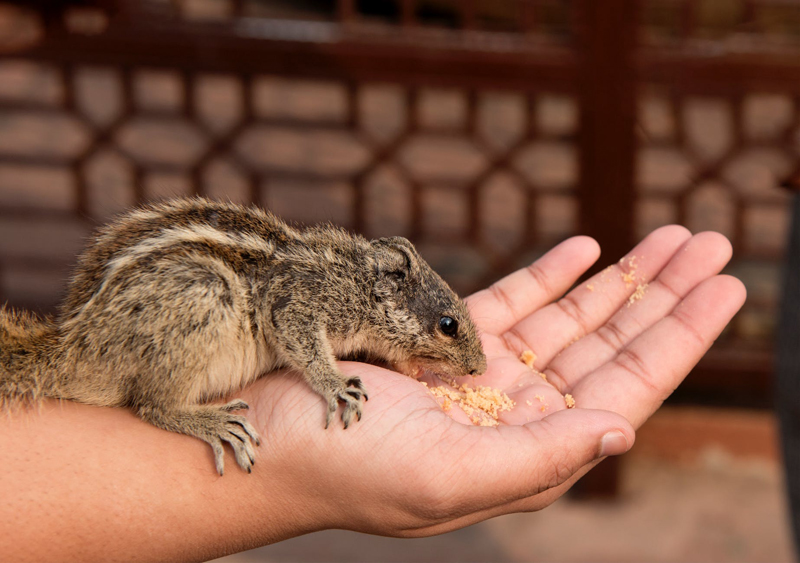Bearded Dragon Care

You could accidently catch a bug to feed to your bearded dragon and end up feeding bioluminescence. Bioluminescence is the same thing that causes a firefly or jelly fish to light up. It is highly deadly to the bearded dragon. I think it is a good idea to raise your own insects. You just never know if an insect has been around poisons or other deadly chemicals.
Temperatures need to be kept warm for the bearded dragon. In nature they would bask in the sun to increase their body temperature. Allow one side of the enclosure to be around 105 F degrees for basking. Never use a heat rock but use a light making sure the light can't be reached by the bearded dragon. The other side of the enclosure should be around 80 - 90 degrees. Don't allow temperatures to get under 60 degrees F. - ever! This way they can adjust their body temperature by simply switching from one side of the enclosure to the other or anything in-between. They can't control their own body temperature internally they must depend on an outside source such as a lamp. They cannot digest their food if they are too cool.
The bearded dragon must have a UV-B light. It is essential. The UVB synthesizes Vitamin D3 which is critical for the body to utilize calcium. The use of UVB prevents Metabolic Bone Disease (MBD). The dragon would naturally get the UVB rays basking in the sun. It just isn't possible to get these much needed rays inside the house, make sure to use a UVB light. It is also a good idea to add extra calcium. You will still need a reptile lamp to increase the temperature inside the enclosure. The UVB doesn't increase the temperature, nor does the lamp used for heat add UVB. Look for reptile lighting in your local pet store to learn the difference between lights used for reptiles.
This article is met to cover just a few requirements of the bearded dragon. For a more complete information about the care of the bearded dragon see my article Bearded Dragon Care
Don't forget to give a Facebook like, share and tweat this article! (Look below ;)
Subscribe free to the exotic pets newsletter. It is quick and easy Just glance to the right or scroll a bit to the bottom and subscribe. I will only bug you once a week :) Be the first to be in the know! Your information is always private!
I am also the Bird editor if you enjoy pet birds subscribe to the Birds newsletter. Birds BellaOnline
Bearded Dragons: A Complete Guide to Pogona Vitticeps (Complete Herp Care) [Paperback]

Also on Kindle Bearded Dragons (Complete Herp Care)
Ferrets a Complete Guide by Diana Geiger (me) five star reviews. After reading the book take a moment to do a quick review.

Also on Kindle
Ferrets: A Complete Guide
This site needs an editor - click to learn more!
You Should Also Read:
Exotic Pet Site Map
Ferrets - A Complete Guide Paperback and Kindle
Exotic Pet Shopping (the safest for your pets)
Related Articles
Editor's Picks Articles
Top Ten Articles
Previous Features
Site Map
Content copyright © 2023 by Diana Geiger. All rights reserved.
This content was written by Diana Geiger. If you wish to use this content in any manner, you need written permission. Contact
BellaOnline Administration
for details.






